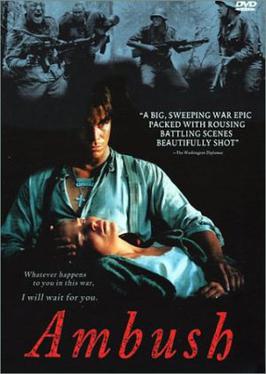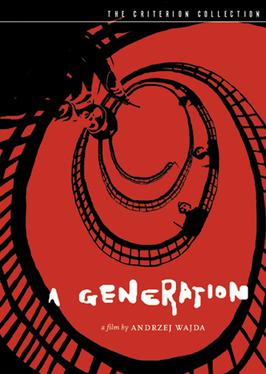When it was proposed in 1985, the idea was for “Air America” was meant to be the first Vietnam War comedy. It was to star Sean Connery and Kevin Costner. Funding took so long that the two moved on (Connery to “The Hunt for Red October” and Costner to “Dances With Wolves”). The film was directed by Roger Spottiswoode (“Under Fire”). It was based on the non-fiction book by Christopher Robbins. The movie went over budget at $35 million. Although considered a bomb, it actually made over $57 million. Some of the budget was a $7 million check to Mel Gibson. Robert Downey made the movie for the pay check and because he wanted to work with Gibson. Downey did not enjoy the shooting in Thailand. The production was marred by two earthquakes and a typhoon. The movie that had a 500-member crew who moved between 44 locations in Thailand, London, and Los Angeles. 26 aircraft were rented from the Thai air force.
Air America was the name given to the CIA’s effort to intervene in the conflict between the non-communist government and communist rebels in Laos. It is set in 1969. The civilian pilots fell into two categories: those who made flights delivering supplies to villagers as part of a “hearts and minds” effort and those who ran guns and opium. Mel Gibson’s Gene Ryack is the latter and Robert Downey’s Billy Covington is the former. The movie opens with an Air America plane dropping bags of rice that plummet through the roof of huts. That same plane is shot down by a peasant firing a rifle. This “golden BB” causes the plane to crash, killing everyone on board. The movie goes from broad physical comedy to tragedy in seconds! Cut to Covington as a traffic chopper pilot. He’s crazy, which makes him perfect for Air America. He gets recruited with the promise that he will be able to do the kind of flying that just got him fired. When he arrives in Laos (“we’re not here”), he meets the cynical Ryack. Ryack has a plan to accumulate a cache of weapons and then sell them on the black market so he can retire. Air America is in bed with a corrupt Laotian Gen. Lu Soong (Burt Kwouk!). Covington is going to make his mission to take down the general, especially after his soldiers rescue the opium and not Ryack/Covington after a crash. Speaking of crashes, the movie is basically a sequence of crashes. After one of them, a rescue chopper is shot down! The movie is crash porn.
“Air America” is an uncomfortable blend of comedy and action. The comedy is not black enough and is overwhelmed by the drama which includes the deaths of several of the characters. And the action lacks suspense, even in the crashes. The movie has lots of explosions, but they are of the ridiculous gasoline variety. There are more crashes than laughs, so the movie was deceptively marketed as a comedy. It is not the first comedy about the Vietnam War. “The Boys in Company C” came out in 1978 and if you want a movie that is clearly a comedy, “Good Morning, Vietnam” was released in 1987.
The cast works hard and is not to blame. Gibson and Downey do have some chemistry and the movie tries hard to be a buddy film. In fact, it works best as one. Nancy Travis is wasted in the role of an aid worker. All of the main characters are stereotypes. Ryack is the cynical veteran who is corrupted by the system. Covington is the daring do-gooder. Lu Soong is the villainous corrupt general. The movie is rife with cliches. The Air America personnel party like journalists or mercenaries (which they basically are). Ryack gets a redemption arc that is very predictable
“Air America” is a dud, but it does have its strengths. The stunt flying is excellent and some of the stunts were so daring that they were nixed by stunt pilot. Spottiswoode was able to find some real Covingtons to do them. Another reason to watch is the soundtrack of classic rock. Now that I think about it, you might want to skip the movie and just buy the soundtrack. By the way, the movie did come under some criticism for having songs that were not around in 1969. Personally, I don’t care as long as the song fits the scene.
Surprisingly, several of the characters are based on actual people. Gen. Vang Pao led CIA-supported forces against the communist Pathet Lao. He ended up immigrating to the U.S. after Laos fell. I doubt he went to see the movie. Air America was a collection of cargo planes that the CIA clandestinely used to support non-communism from 1950-1976. It did support Gen. Vang Pao and it did get involved in drug smuggling. Or turned a blind eye to it, according to some historians. On a positive note, it did some reconnaissance work for the American army and did some search and rescue for downed pilots. Covington and Ryack are not based on real people, but did represent the two basic types of employees. The fact-finding Senator Davenport was based on Sen. Stuart Symington. Symington made a trip to Laos to check out the CIA operation and later expressed disgust at the activities Air America participated in. Major Lemond was inspired by Maj. Richard Secord who was in charge of Air America during the Secret War in Laos. If you want to learn about Air America from a feature film instead of a documentary, “Air America” will give you the gist of it. Just don’t expect to laugh it up.
GRADE = C-
.jpg)

